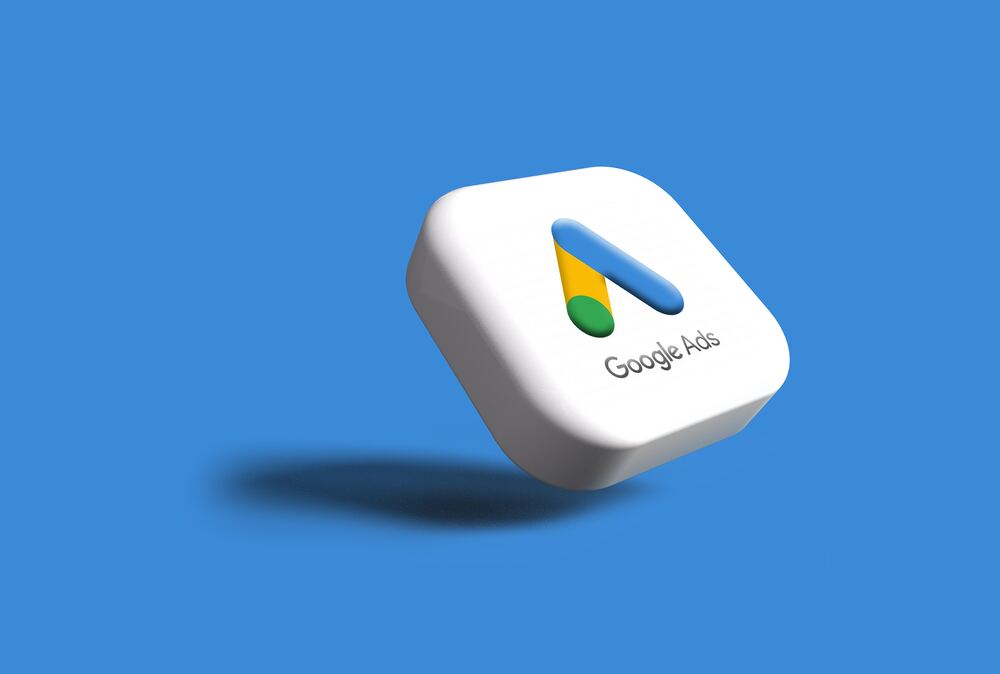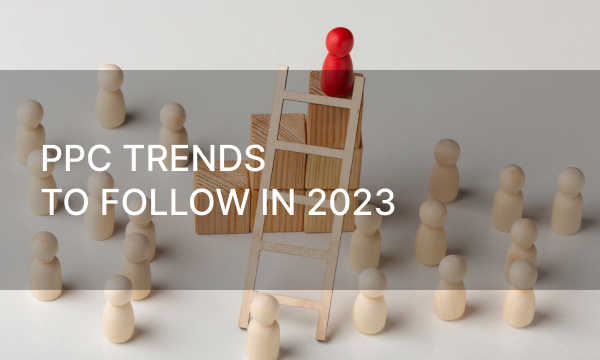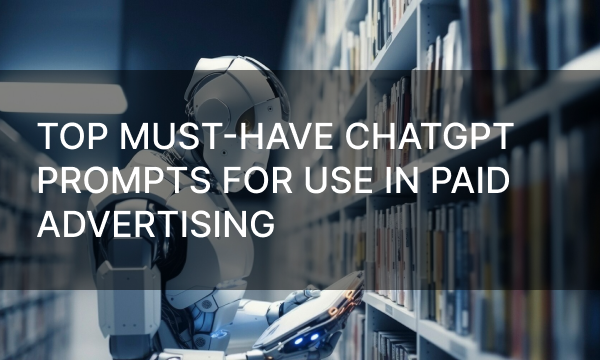Introduction to the world of AI-driven PPC bid strategies and their advantages to maximize ROI.
The secret to maximizing ROI is using AI algorithms that process big data in real time, enabling dynamic bid adjustments based on various factors, like keyword performance, user behavior, and market trends. AI tools can gain insights into audience preferences and seasonal behavior, leading to more strategic bid placements to improve CTR and conversions. By using these sophisticated AI-driven PPC strategies, you can both optimize your ad budgets and develop a more effective and agile advertising ecosystem.
This article delves into the ways AI can enhance efficiency of your PPC bid strategies, facilitating more informed decision-making and delivering best results. We will cover the basics of AI in bidding, as well as advanced bid strategies, equipping you with the knowledge to thrive at the intersection of technology and advertising. Whether you’re a PPC expert or new to the industry, we offer practical tips to keep you competitive and successful.
What Are AI-Driven PPC Bid Strategies?
 Photo by Maarten van den Heuvel on Unsplash
Photo by Maarten van den Heuvel on Unsplash
AI-powered PPC bid strategies mark a significant breakthrough in digital marketing, using the advanced capabilities to optimize ad spending. AI’s ability to improve decision-making by processing extensive data in real-time allows you to optimize strategies using insights that would be difficult to identify through manual analysis. AI technologies can forecast which bids are most likely to generate optimal outcomes by considering factors such as user behavior, search trends, and past performance data.
AI-powered PPC bid strategies dynamically automate and optimize bids. Unlike traditional methods that rely on fixed bid settings, AI automatically modifies bids in response to market changes and user interactions. This approach guarantees the effective use of ad budgets and enhances ROI by focusing resources on high-performing keywords and target audiences.
Traditional Vs. AI-Driven Bidding
Traditional PPC bidding uses manual tactics, setting bids based on the experience, market insights, and keyword performance analysis. This method often requires bid adjustments based on established rules and historical data. Traditional PPC offers more precise control over individual bids and campaigns, enabling you to customize your strategies to meet specific audience needs. However, this approach is limited by human capabilities in analyzing and responding to complex data, which may lead to missed opportunities for optimal bidding, especially in volatile markets.
In contrast, AI-driven PPC bidding uses advanced algorithms and machine learning techniques to automatically adjust bids based on multiple factors, such as real-time auction dynamics, user behavior, and seasonal trends. The key differences between the two approaches are their operational efficiency and flexibility. AI-driven bidding can analyze big data in real time, allowing for instant bid adjustments to drive performance and ROI.
How Many PPC Bid Strategies Does Google Ads Have?
 Photo by Rubaitul Azad on Unsplash
Photo by Rubaitul Azad on Unsplash
Google Ads provides a variety of bidding strategies to meet the needs of different campaign types. They optimize performance in every auction, a process commonly referred to as real-time bidding. During each auction, numerous factors are considered beyond just your bidding strategy, such as the device used, location, time of day, operating system, and more.
Google divides its Smart Bidding strategies into three main goals:
- Conversions
- Clicks
- Viewability
If you’re not sure which goals to start with, consider the following points when deciding on your bidding strategy:
- Do you want to motivate users to take direct action on your site?
- Do you want to drive website traffic?
- Do you want to increase brand awareness?
- Do you want to improve engagement and interaction with video?
- Do you want your product or brand to attract users’ attention?
Conversion-Based Bid Strategies
Google Ads offers these Smart Bidding strategies to boost conversions:
- Target CPA
- Target ROAS
- Maximize Conversions
- Maximize Conversion Value
- Enhanced CPC
Click-Based Bid Strategies
One of the only automated bid strategies available now to drive website traffic and visibility is Maximize Clicks. It uses Google’s algorithms to automatically adjust your bids in real-time to get maximum clicks within your ad budget. The system adjusts bids based on past impressions, search queries, and user behavior, ensuring that your ads are positioned for optimal performance without the need for manual intervention.
However, it’s essential to consider that while Maximize Clicks can drive significant traffic to your website, it isn’t inherently focused on conversion rates, meaning that while you may experience an increase in site visits, these clicks do not necessarily equal customer engagement or sales. So, while Maximize Clicks is an effective strategy for achieving initial impact, it’s crucial to complement this approach with additional tactics aimed at optimizing conversion rates and achieving sustainable growth, such as refining ad copy, improving landing pages, and utilizing remarketing efforts to engage the users who have previously interacted with your site.
Visibility-Based Bid Strategies
Not all PPC campaigns are focused on final conversion. Therefore, it’s important to include initiatives to increase brand awareness. If you don’t, the pool of customers familiar with your product will continue to reduce.
If you want to increase brand awareness via ad campaigns, consider the following automated PPC bidding strategies:
- Target Impression Share
- Cost-per-Thousand impressions (CPM)
- Target CPM
- Viewable CPM
Target Cost Per Action (CPA) Bidding
Target CPA allows you to specify the maximum amount to pay for a conversion. Google Ads will optimize to get the most conversions at or below your specified CPA. The platform uses your Target CPA to adjust bids based on how likely a particular user is to convert. While some conversions may exceed your target CPA and others may fall below it, Google Ads strives to maintain your overall CPA at the level you set.
There are multiple cases for choosing Target CPA bidding:
- Available historical conversion data bidding strategy
- Better budget control bidding strategy
- Accurate conversion tracking bidding strategy
Target CPA has some limitations to be aware of:
- Limited budgets lead to reduced visibility. If you set a competitive Target CPA, Google may restrict your ad visibility or participation in auctions, prioritizing your budget for more profitable or competitive opportunities. You may see a drop in impressions and clicks as the system manages budget spend to focus on the most likely buyers.
- A mismatch between your daily budget and Target CPA results in poor performance. If your ad campaign has a limited daily budget with a low Target CPA, your impressions could be reduced. In this case, you will need an exceptional conversion rate for the clicks you receive to keep your Target CPA within your desired range.
Target Return On Ad Spend (ROAS) Bidding
Target ROAS focuses on obtaining a predetermined return on ad spend. Google Ads adjusts bids based on your specified ROAS to maximize the conversion value of achieving that goal. Google uses your ROAS settings to determine bids based on each individual user’s likelihood of converting.
Here are some examples of using target ROAS in PPC campaigns:
- Goals aimed at generating income. Target ROAS is especially useful for e-commerce companies that want to increase revenue.
- High-value transactions. This PPC bidding strategy can be especially effective for high-revenue transactions or high-volume conversions.
- An accurate conversion tracking with precise measurement. When tracking is accurate and verified, it’s a good tool for ad campaigns.
The Target ROAS bidding strategy helps you effectively manage your PPC campaign costs and the revenue they generate. This approach ultimately maximizes the revenue earned for each dollar spent. By setting the Target ROAS, Google adjusts ad campaign bids to prioritize the conversions that are most likely to meet or exceed your ROAS goals. As your ad campaigns gather more historical sales data, you’ll see an increased allocation of ad budget to high-revenue-generating conversions with this targeting setup.
In search campaigns, branded and non-branded terms differ greatly in performance. Brand terms have the highest ROAS as they indicate that someone is specifically searching for your brand, which correlates with a higher likelihood of conversion. Non-branded terms are more competitive and expensive, resulting in lower ROAS compared to branded terms. Set campaign-level ROAS targets to highlight these distinctive differences.
Maximize Conversions Bidding
Maximize Conversions automatically adjusts bids to optimize the number of conversions you achieve within your budget. This approach focuses on using your entire campaign budget without restrictions on ROAS or CPA.
Maximize Conversions can be an ideal bidding strategy for:
- Budget flexibility. This strategy isn’t limited by CPA or ROAS targets and is ideal for maximizing conversions within your budget.
- Quick wins. This is an ideal bidding strategy if you’ve just launched a new product and are expecting high conversions.
- Wider audience. This strategy is ideal for a wider audience because the system’s recognition of a customer increases your ad exposure.
Maximize Conversion Value Bidding
Maximize Conversion Value strategy adjusts bids to maximize the total conversion value within your budget. This strategy enhances conversion value within your campaign budget, without restrictions on ROAS or CPA.
Maximize Conversions can be an ideal bidding strategy for:
- The value conversion over volume strategy is useful when the goal is to prioritize high-value conversions over conversion volume.
- A revenue-driven campaign strategy is essential if you want to maximize your revenue with the Maximize Conversion Value option.
- The Multi-Price Products strategy is effective for products with different prices as the system identifies high-value transactions.
Some limitations when using Maximize Conversions Value tactics:
- The campaign performance depends on its budget. If your budget is poor, it prevents Google Ads from optimizing valuable conversions.
- Reduced control over particular conversions. Tracking conversions with assigned values aims to measure the overall conversion value.
- Less effective performance metrics. While your revenue may rise, you may also receive a higher CPA in more competitive markets.
Maximize Clicks Bidding
The Maximize Clicks bidding strategy aims to get the maximum clicks within your budget. A key benefit is the ability to set bid limits, ensuring that Google does not exceed these amounts during the auction.
Maximize Clicks is effective for your campaigns if:
- You prioritize volume over conversions
- You manage Top-of-Funnel or Middle-of-Funnel campaigns
- You launch new campaigns without historical data
Target Impression Share Bidding
This PPC bidding strategy emphasizes the visibility of your ad campaigns. Target Impression Share automatically adjusts your bids to ensure your ads reach your target impression share on the search results page.
Choose your goal to show your ads:
- At the very top of the page
- At the top of the page
- Anywhere on the search results page
The Target Impression Share strategy can improve the performance of your ad campaigns if:
- Brand awareness is a priority
- You operate in a fiercely competitive market
- You focus on top-of-funnel keywords
Conclusion
So, we’ve outlined AI-driven PPC bidding strategies and provided guidance on when to use them. Achieving success in PPC isn’t just about choosing a random strategy. It involves finding the right approach to meet your specific goals and campaign requirements. Once you master these strategies, you’ll be able to make informed decisions and maximize your advertising budget.
By shifting from traditional bid approaches to AI-based strategies, you can achieve higher conversion, lower CPA and better ROI. Adopting AI-driven PPC bid strategies goes beyond simply following the progress. Data-driven decision making and strategic foresight ensure that all spends match business goals with precision. Using AI in PPC campaigns unlocks more efficient spending, improved customer targeting, and better financial performance.



